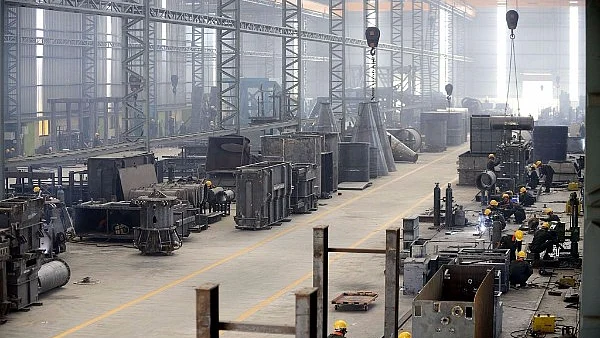
Why India’s GDP Growth Decelerated To 5.7 Per Cent In The First Quarter – And No, It’s Not DeMo
It wasn’t demonetisation that caused GDP growth to slow down in the first quarter of fiscal year 2017-18. Here’s what did.
The gross domestic product (GDP) numbers for the first quarter of fiscal year 2017-18 are in and the picture does not look pretty as far as the economic outlook is concerned. The data shows that India's GDP growth in the quarter decelerated to 5.7 per cent, compared to 6.1 per cent in the preceding one. Finance Minister Arun Jaitley said the slump was a matter of concern. Indeed, it is.
Why did the growth rate slide? One thing is clear. It's not because of demonetisation, which did play some role in slowing the growth rate from 7 per cent in the third quarter of 2016 to 6.1 per cent in the fourth; however, its impact seems to have subsided in the June quarter.
Take the heavily cash-reliant construction sector, for instance, where growth rate had fallen drastically due to a cash flow choke. But it rebounded in the June quarter, registering a growth rate of 2 per cent compared to the -3.7 per cent in the March quarter.
Similarly, growth in the trade and hotel transportation sectors, which were also heavily impacted by demonetisation, revived, registering a double-digit growth of 11.1 per cent against 6.5 per cent in the March quarter.
The real reason for the slide down of the growth rate is implementation of the Goods and Services Tax Act (GST). Though it came into force from 1 July, after the first quarter ended, most of the destocking activities were taken up by manufacturers in the preceding months; that is, during the first quarter. Understandably, growth rate in the manufacturing sector fell from 5.3 per cent in the March quarter to 1.2 per cent in the June one. Similarly, growth in the mining sector also registered negative growth of 0.7 per cent against the rate of 6.4 per cent in the previous quarter. Both will bounce back in the September quarter.
Another major reason for the fall seems to be the sharp decline in net exports growth, which stood at a measly 1.2 per cent in the first quarter compared to 10.3 per cent in the March one. Imports also registered a growth rate of 13.4 per cent, a mild increase in their 11.9 per cent growth rate in the previous quarter. Hopefully, these will be favourable in the next quarter.
Growth in private consumption also declined from 7.3 per cent to 6.7 per cent; however, this is not the major reason for the slide in overall growth.
Shifting to the new wholesale price index (WPI), which is used as a deflator for many sectors of the economy for calculating the nominal GDP, may have also played spoilsport. The Department of Industrial Policy Production updated WPI by changing the base year from 2004-05 to 2011-12. It revised weights to the list of items that are used to calculate WPI and dump many which had become obsolete. The Index of Industrial Production was also updated with 2011-12 as the new base year.
With inputs from @Bodhisatvaa.